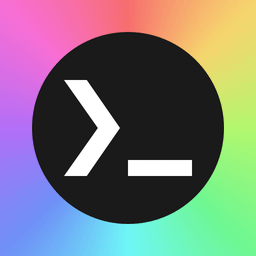chirospasm
Deliverer of ideas for a living. Believer in internet autonomy, dignity. I upkeep instances of FOSS platforms like this for the masses. Previously on Twitter under the same handle. I do software things, but also I don’t.
- 0 Posts
- 79 Comments

 331·10 days ago
331·10 days agoSo shutdowns will lose one more leverage point? Got it. Make them safer. Make them more convenient.
Although this has been heavily downvoted, the author has a point: what do private, safe AI experiences in a software mean for the common browser user? How does a company that was founded as an ‘alternative’ to a crummy default browser take the same approach? For those that do and will use the tech indiscriminately, what’s next for them?
Just as cookie/site separation became a default setting in FF eventually, or the ability to force a more secure private DNS, what could Mozilla consider on its own to prevent abuse, slop, LLM-syncophantism / deception, undesired user data training, tracking, and more? All that stuff we know is bad, but nobody seems to be addressing all too well. These big AI companies certainly don’t seem to be.
Rather than advocate for Not AI, how do we address it better for those who’ll simply hit up one of these big AI company websites like they would social media or Amazon?
Is it anonymous tokenization systems that prevent a big AI company knowing who a user is, a kind of ‘privacy pass?’ Is it text re-obsfucation at the browser level that jarbles user input so that patterns can’t emerge? Is it even a straightforward warning to users about data hygiene?
The above is silly, and speculative, and mostly for conversation. But: maybe there’s something here for your everyday browser user. And maybe we ought to consider how we help them.

 14·1 month ago
14·1 month agoHalligan, without the support of any career prosecutors in the office she now leads …
Lol, get fucked

 7·4 months ago
7·4 months agoThis comment is underrated.
Make the internet ‘net’ again.

 301·4 months ago
301·4 months agoIt’s only irradiated gold if it comes from the Radioactive Startup Part of San Fransisco.
Otherwise, it’s just sparkling rock.

 12·6 months ago
12·6 months agoBased on how much the institutions of the US will continue to uphold, I think we’ll see the impact in 10 years or more. Hopefully, though – granted, hope isn’t an operational term, just an ideal – there will be some measure of course correction within that decade.

 15·6 months ago
15·6 months agoLast I recall, friendica was the most solid alternative. It is a fairly feature-complete analogue of Facebook and a few other social platforms. Maybe give it a look!

 12·6 months ago
12·6 months agoPlug the power into a 4090 RTX improperly, and you may get that burning for free!

 9·6 months ago
9·6 months agoNexus phones were the best
GrapheneOS affords you the ability to have completely isolated and distinct phone profiles, where you can install all your required work apps. They are installed separate from your main profile, kind of like second or third phone. No need for a completely different device.
GrapheneOS instantiates an improved version of this feature that Android already offers. It’s a great way to keep things separate. I do the same. Who wants to stuff their pockets or bags with more phones?
- Pixel, and immediately install GrapheneOS.
- A Linux based phone, like the PinePhone or Purism 5, and run your Android apps (if desired) inside Waydroid.

 121·6 months ago
121·6 months agoHello! I recently deployed GPUStack, a self-hosted GPU resource manager.
It helps you deploy AI models across clusters of GPUs, regardless of network or device. Got a Mac? It can toss a model on there and route it into an interface. Got a VM on a sever somewhere? Same. How about your home PC, with that beefy gaming GPU? No prob. GPUStack is great at scaling what you have on hand, without having to deploy a bunch of independent instances of ollama, llama.ccp, etc.
I use it to route pre-run LLMs into Open WebUI, another self-hosted interface for AI interactions, via the OpenAI API that both GPUStack and Open WebUI support!
If you are looking for a hardened phone, I would consider trying GrapheneOS for a bit, see if it does what you are looking for. Uses SELinux and a seccomp-bpf policy for app sandboxing, as well as runs a hardened kernel with a hardened memory alloc. Great isolation approach, too, so that you can run apps on a ‘completely different phone,’ so to speak – think of the isolation like a small version of the OS that can keep apps entirely separate. Finally, if desired (and needed for certain apps), you can sandbox all Google services so that they don’t have direct access. It’s is a different approach to, say, microG.
GrapheneOS is all about hardening. Security is solid.
VPN wise, Mullvad wireguard servers are also solid. You can do multihops, which help you obsfucate traffic to degree. They have also been playing around with packet shaping (if you use their app directly).
Sim cards can be swapped out if use a VoIP service like jmp.chat.

 71·7 months ago
71·7 months agoI remember reading somewhere that drivers beyond 550* may have some issues with linux right now. I might consider rolling them back to a version that was already working.
*Citation needed, but it was a lower version than what is currently the latest available
Diogenes would be proud here
Thank you for posting this! I assumed some FF-based browsers, while claiming to remove telemetry, in fact still phoned home to a degree. This is good know!
Also, I was surprised by a few others on the list, like Mullvad, Kagi, and DuckDuckGo, being so straightforward – not that making fewer connections implies better privacy, as even a single connection can transmit any kind of data, but moreso that there some browsers that are designed to operate with less complexity.
Really surprised by Zen, which is a FF derivative claiming to be all about a ‘beautiful’ and ‘simple’ web browsing experience, having a ton of connections.



I could hear this screenshot.